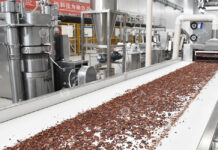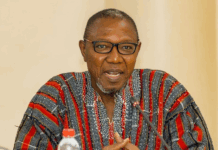
Interest Rate
Ghana’s business environment which a decade ago was referred to as a “golden age of business” has now been plagued with several challenges which includes inadequate power supply, high inflation rate, depreciating currency and high interest rate; a disincentive to business. Ghana is ranked 3rd after Argentina and Malawi according to Trading Economics report released earlier this week. The rapid growth in prices of goods and services on the domestic market, high cost of production, high utility tariffs and foreign exchange losses has eaten deep into the working capital of businesses, making it very difficult to honour their debt obligations hence a rise in non-performing loans.
Rising interest rates in Ghana is stoking cost of borrowing and forcing businesses to go bankrupt, research conducted by Trading Economics has stated in its recent report. The global economics research entity placed the lending rate of banks in the West African country to be around 26% but that of microfinance institutions are pegged at about 70%. Argentina was ranked first in the world with an interest rates of 34.43% followed by Malawi with 27% and Ghana with 26% as at March 2016. Below is the list of ten (10) countries with high interest rate.
10 Top Countries With High Interest Rate
| Country | Latest | |
| 1 | Argentina | 35.43 |
| 2 | Malawi | 27.00 |
| 3 | Ghana | 26.00 |
| 4 | Gambia | 23.00 |
| 5 | Belarus | 22.00 |
| 6 | Iran | 21.00 |
| 7 | Haiti | 20.00 |
| 8 | Venezuela | 19.54 |
| 9 | Ukraine | 19.00 |
| 10 | Kazakhstan | 17.00 |
Association of Ghana Industry Report
High-interest rate has consistently been cited by Association of Ghana Industries (AGI) as one of the major obstacles to doing business in the country. The 2015 fourth quarter business barometer report by AGI indicated that, the confidence level of businesses in the country’s economy has reduced and one of the major causes was high interest rate. The business confidence index dropped from 97.3 in the previous quarter to 93.1.
Jorge Kappor, an Indian delegate of the just ended 2016 World Bank/IMF Spring Meetings in Washington DC, USA told Business Day Ghana in an interview that, “The prevailing high lending rates in the country is stifling investments, the development of the private sector and economic growth in general.”
Causes of High Interest Rate
Key of the causes of high interest rate in Ghana is the insatiable desire for government to borrow from commercial banks through treasury bills and bonds. Some analysts blame competitive government borrowing as a major cause of high lending rates in the country and this is crowding out the private sector. The government of Ghana will borrow GH¢4.9 billion (US$126,251.9) through treasury bills, notes and bonds this April 2016 according to Bank of Ghana. Below is the treasury bill and bond rate for this week.
Treasury Bill Rate (25th April, 2016-29th April, 2016)
| Period | Discount Rate | Interest Rate |
| 91 – Day | 21.5752% | 22.8052% |
| 182 – Day | 21.9370% | 24.6396% |
| 3 – Year Fixed Rate Bond | -% | 24.5000% |
Source: Ministry of Finance
The above rates are subject to changes due to bidding between commercial banks.
Again, high costs in the banking industry covering operational costs, energy costs due to the current energy crisis fairly stabilized now, as well as structural inefficiencies, high borrower risks emanating from inadequate collateral, lack of credit referencing, un-bankable projects and general macro-economic instability have contributed to the high interest rates.
Monetary Policy
Monetary policy consists of the actions of a central bank, currency board or other regulatory committee that determine the size and rate of growth of the money supply, which in turn affects interest rates. Ghana in 2012 established a Monetary Policy Committee and its roles are stipulated in the Bank of Ghana Act 2002, (Act 612), Section 27. The Monetary Policy Committee of the Bank of Ghana kept the policy rate at 26% at the meeting in March, 2016. The committee citied an encouraging drop in headline and core inflation, and a balance in growth prospects and inflation risks. Consumer Price Inflation (CPI) for March 2016 was 19.2%- highest since 2009 according to Ghana Statistical Service (GSS). Below is the table MPC rates since 2015.
Monetary Policy Rate
| Period | Percentage |
| February 2015 | 21% |
| May 2015 | 22% |
| July 2015 | 24% |
| September 2015 | 25% |
| November 2015 | 26% |
| January 2016 | 26% |
| March 2016 | 26% |
Source: Bank of Ghana
Banking Industry
Ghana has twenty-nine (29) universal banks with seventeen (17) been foreign owned whiles twelve (12) are Ghanaian owned. The big question is; what is the banked population in Ghana? Do we need all these banks in Ghana’s economy? What is the growth relation between the banking industry and Ghana’s economy? Are banks’ products and services tailored to the real needs of Ghana’s economy? Is the minimum capital for universal banks adequate? According to the World Bank as at 2014, Nigeria had a GDP size of US$568.5 billion with a population of about 177.5 million people whiles Ghana had a GDP size of US$38.62 with a population of about 26.79 million. Nigeria has 22 universal banks whiles Ghana has 29 universal banks not to even mention microfinance and savings and loans institutions. There should be a drastic banking reform to support Ghana’s economy and a lot more specialization in the banking industry.
Projection
If inflation keeps rising, the likelihood of interest rate coming down will be low because of relation between inflation rate and interest rate. Ghana’s CPI is largely driven by cost push factors of which utilities and transportation cost contribute a greater percentage. Also, if central government does not reduce the volumes of borrowing through treasury bills and bonds, interest rate will keep soaring. To this end, stakeholder engagement to reduce borrower risks will contribute to lowering interest rate in Ghana’s economy. Credible and effective credit referencing institutions operating in Ghana could help drive interest rates down. Banking reforms tailored to Ghana’s economic growth will drive interest rate down in the foreseeable future.
By Emmanuel Amoah-Darkwah
The writer of this article is a Chartered Economist
Contact him at katakyiequamevigor@gmail.com/ 0245-683297


























